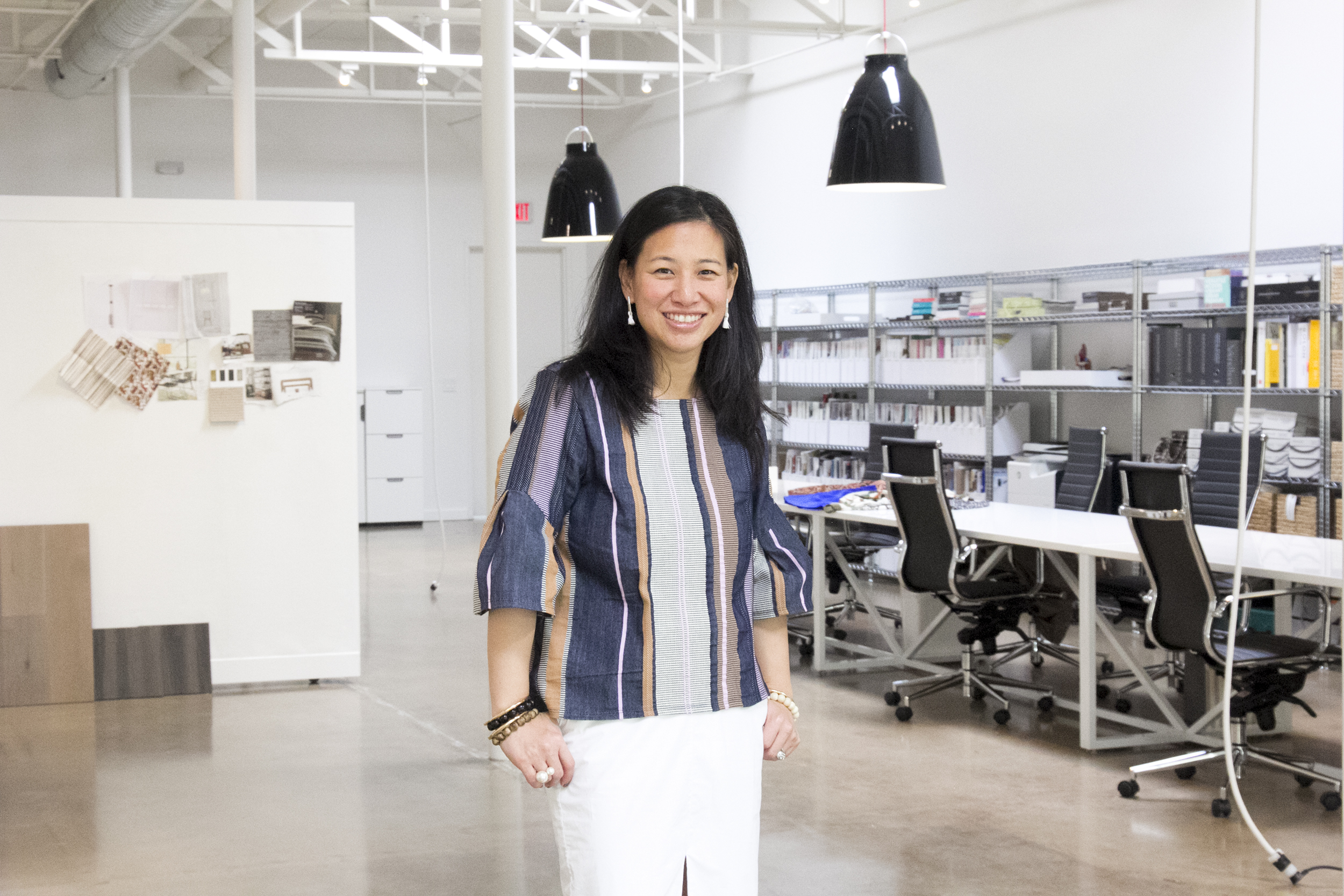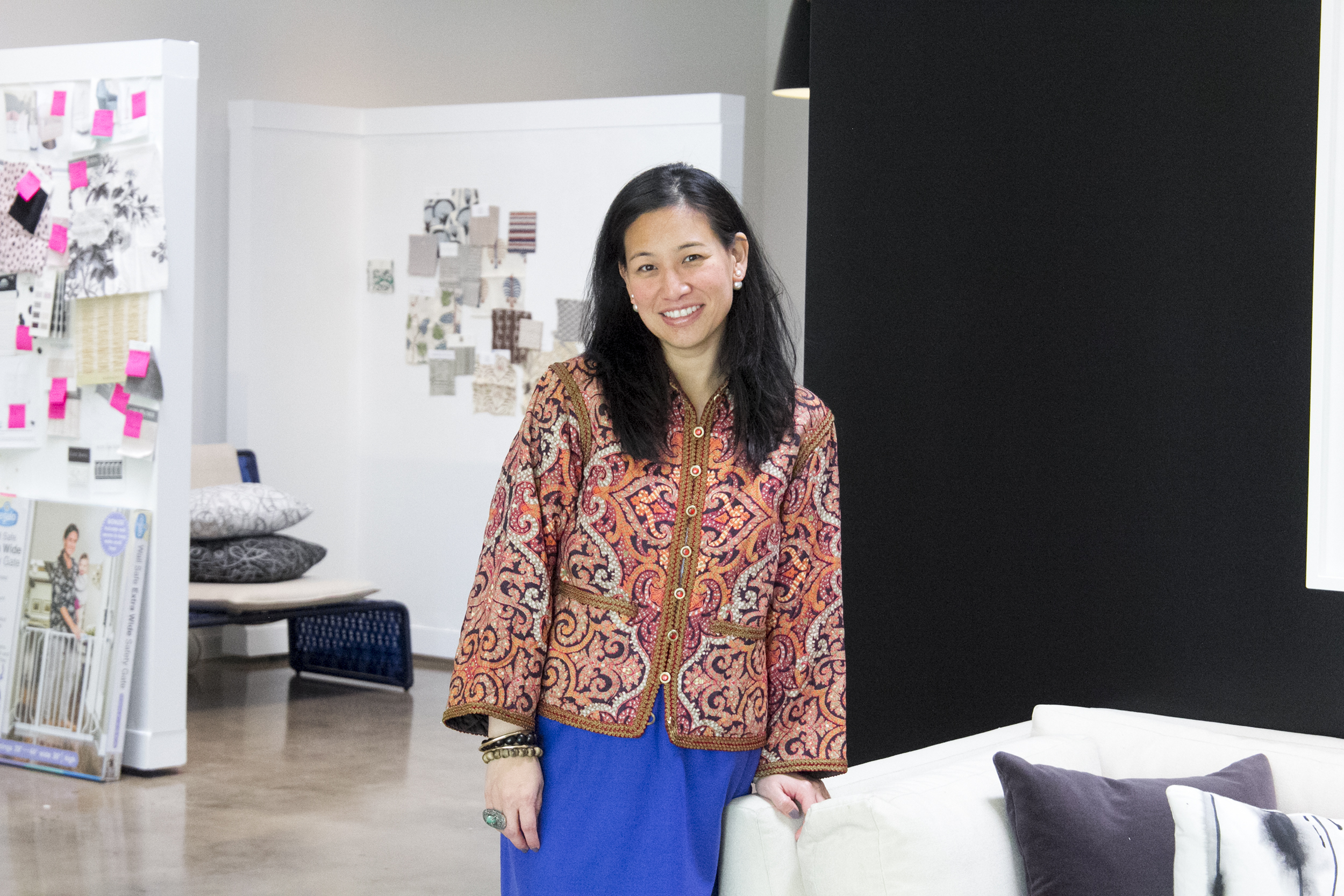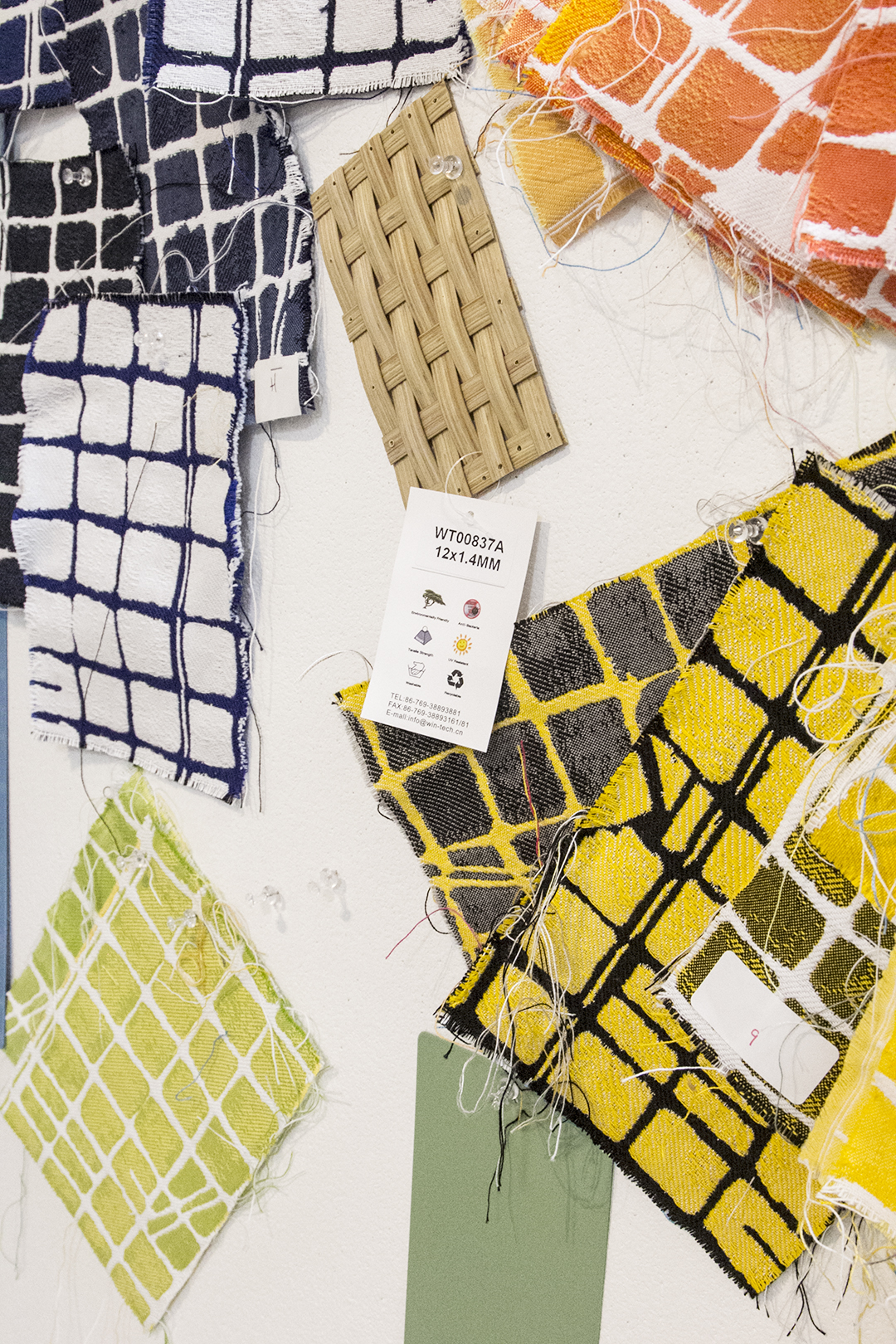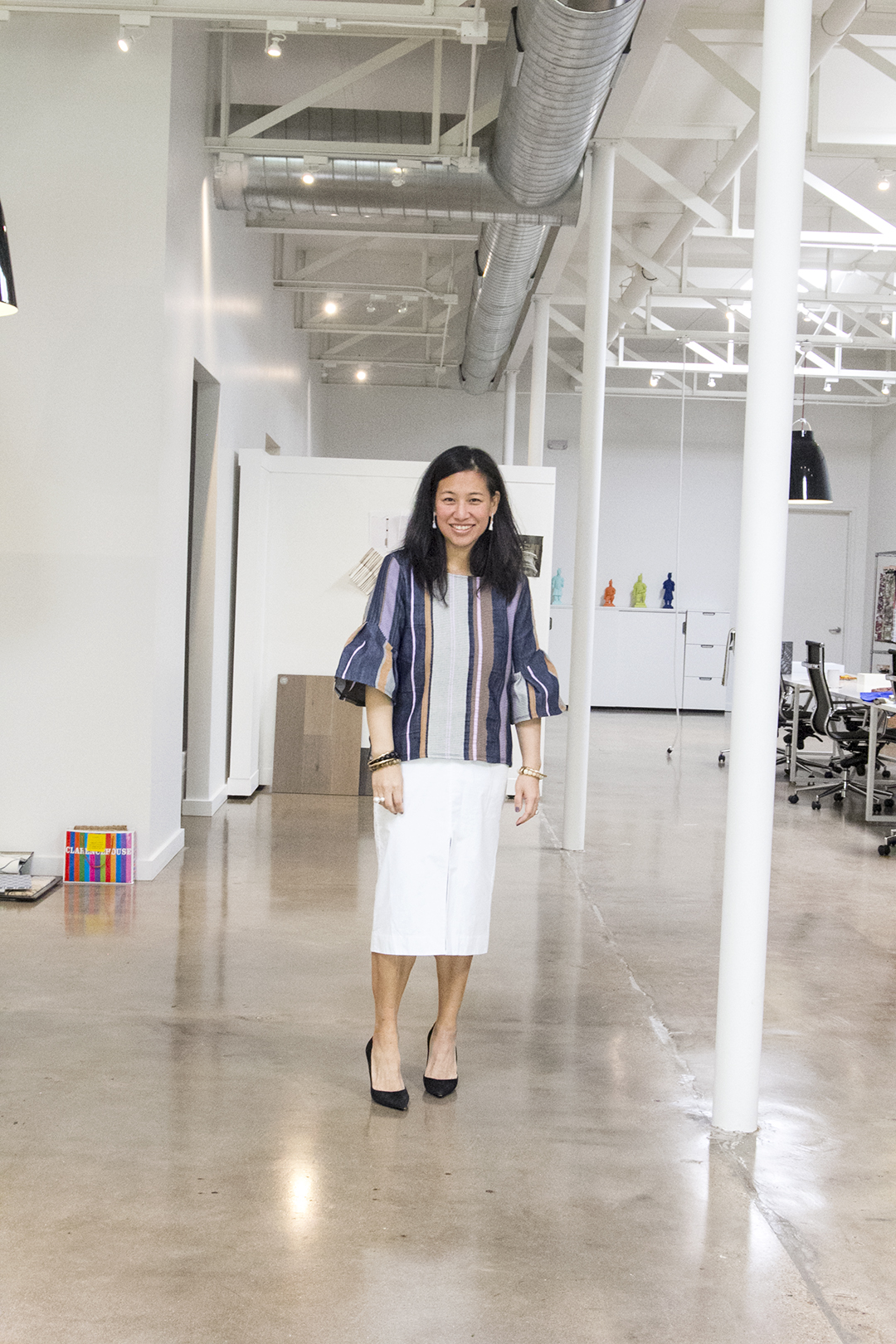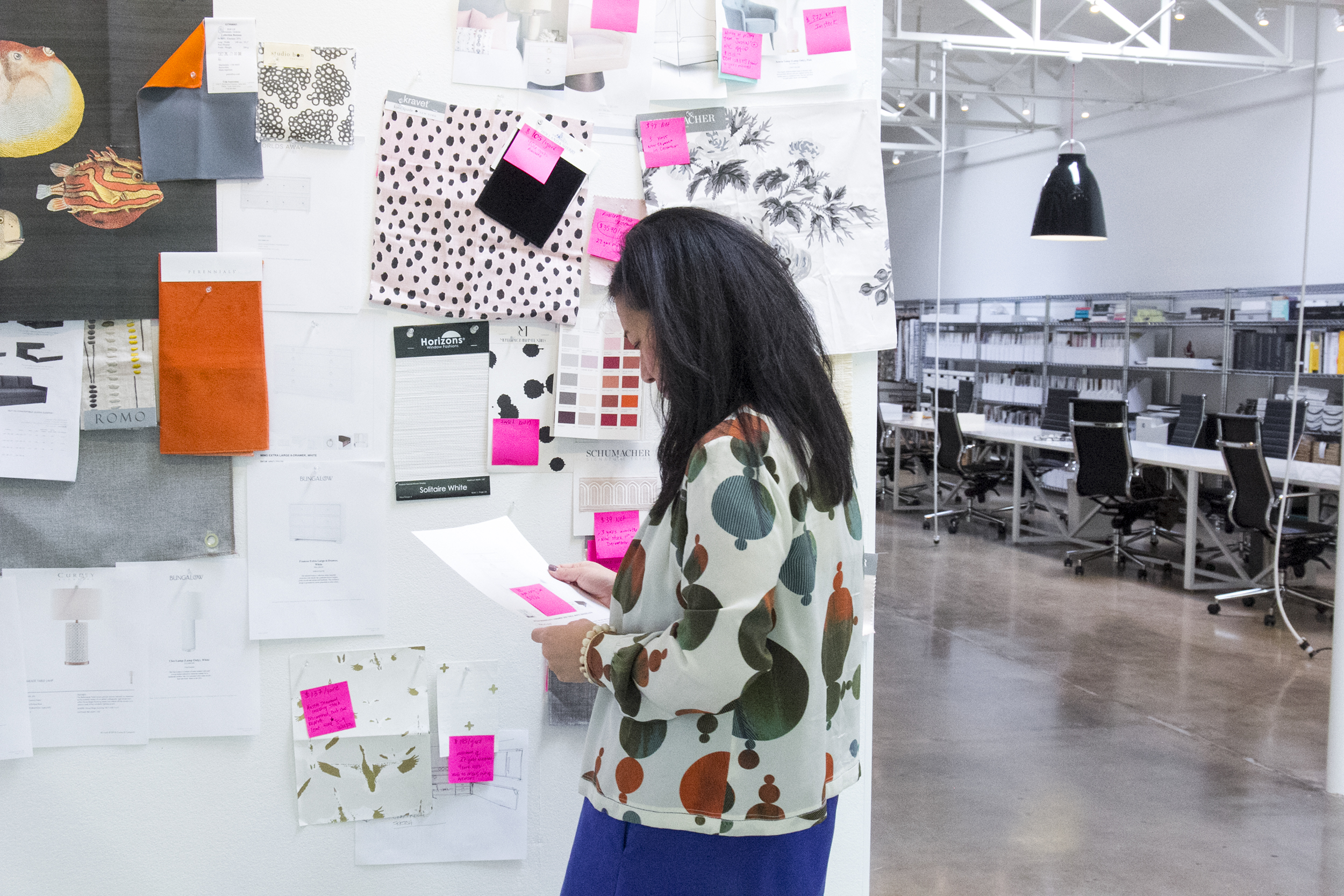Jean Liu had a good job. As an invaluable member of her family business, she worked in product development, traveling to China to liaise with manufactures and explore the facets of the job she found most interesting. Everything looked good on paper, but sometimes good just isn’t enough.
When a friend who was going through a divorce asked for help revamping her condo, Jean was there to spearhead the makeover. Soon, Jean found herself fielding more and more requests for interior work, and knew it was the right time to launch her eponymous company, Jean Liu Designs.
Locking in an office, taking on designers and participating in creative showcases allowed Jean to establish a reputation and begin to scale her business, where she looks to work with like-minded people who share her aesthetic. She believes this creates a more fluid and efficient design process.
“I also try to have people on my team who love this field of work so much, they view it as a lifestyle and not as a job,” Jean says, adding that she is always on the lookout for new, overqualified individuals, who are experts in different aspects of the business.
With the interiors company expanding, Jean returned to her family business to launch Stori Modern, a direct to consumer line of outdoor furniture. By removing the overhead associated with retailers, her team is able to offer better quality at more competitive price points.
Here, Jean tells us how she creates boundaries, ensures her companies don’t cannibalize one another and why she think fear can be a strong motivation.
 THE TRANSITION FROM WORKING IN THE FAMILY BUSINESS TO STARTING HER OWN FIRM
THE TRANSITION FROM WORKING IN THE FAMILY BUSINESS TO STARTING HER OWN FIRM
When I first entered the family business, I spent quite some time trying to understand how the entire operation worked. I travelled to meet customers, visited factories in China, worked with our sales team to set budgets and projections, but nothing held my interest more than working with our product designers to develop next season’s line. For several years, I worked with this team closely, and they were kind enough to let me hang with them. Outside of work, I was also dabbling in some design projects and selling antiques as a hobby until I realized my true love was for interior design. At that point, I went to the executives I had been working with and asked to take a board position while they managed the day to day operations.
Before I decided to start my design business, a friend asked me to help her “redo” her condo. She had gone through a divorce and the furnishings reminded her of “him.” Moving wasn’t an option, so together we purchased a few new pieces of furniture, painted the walls, recovered existing pieces to give her place an entirely different feel. Together, we made the space reflect this new chapter of her life. Before the project was done, I received design requests from others who knew I had been helping this friend. I agreed to help them too and realized this had evolved into more than just a hobby. So, in 2007 I founded Jean Liu Design, LLC.
FROM LAUNCH TO SCALING
When I started, I worked out of a converted garage bay attached to my house. The commute was amazing, but I quickly outgrew the space, so the first change to take my business to the next level was getting “real” office space. The second step that helped take me to the next level was hiring another designer to take on part of the workload. Having her on my team allowed me to take on more clients. I also decided to do a show house, which I think every designer should do at least once. For me, it was an opportunity to take on a space with no particular client in mind, thereby having the chance to “showcase” my creativity with few or no constraints. Most recently, I began working with a PR firm to garner more exposure. Their efforts have opened new doors for me in the design community across the country and allowed me to get visibility I know I would not have gotten otherwise.
The design business is much more than presenting a client a vision for their project in hopes they green light it. The creative side represents only half of the job. Logistically, the job is learning how to be the most effective middleman. We are constantly working between the client and the vendor to ensure a project is executed smoothly.
THE EVOLUTION OF HER IDEAL CLIENT
During the early days, I definitely took on design projects that weren’t ideal, mainly from the point of aesthetics. I agreed to do them because there were financial demands to address, but more so because I still felt my involvement on the project would be an improvement. In other words, I could honestly say I was delivering a benefit to my client, even if we didn’t share the same vision.
These days, I think clients who approach me have seen my work and worrying about whether or not we are a “creative fit” is less of an issue. However, I do still encounter clients who I’m not in sync with from a business or financial point of view, so those end up being the projects we don’t take.
When I meet a prospective client, I know they’ve come to interview us, but I’m also interviewing them. My team and I try to get a read on whether or not we are a fit. If any one of us has a concern, we pass on the job, since everyone on my team has to interact with the client. It’s also important to have clients who understand and appreciate your style because otherwise, it’s a long and painful process for both parties.
We still have and always will have financial demands, but I try to be conscientious about managing our overhead, so we don’t get overextended and take work just to pay the bills.
Asking a client to sign a clear and concise design contract is the most effective way to set boundaries. That’s not to say the boundaries aren’t blurred or overstepped from time to time, but luckily the contract has alleviated many potential pitfalls.
WHAT HER TEAM LOOKS LIKE
My design team consists of three women, who are integral to the vitality of my business.
Lisa is a designer and the team’s technician, especially when it comes to lighting, plumbing, and hardware. Just last week a contractor asked her about a lip strike, and I responded by wanting to know if I could use it with my plumper! Lisa is also the first to read my mind and can anticipate my next thought or question.
Bonnee is my second designer and the most recent hire. She joined our team with significant experience from another well respected design firm. Bonnee is equally accomplished in her own right, as she is the founder and creator Studio Bon Textiles, which can be found through Schumacher.
Karen is my book keeper and office manager. She ensures all invoices and purchase orders are handled for the various projects. We are lucky Karen possesses the patience of Job, since invoicing and tracking can be a tedious task.
First, I look for like-minded people. It may come across as a bit of a club like approach, but I guess, so be it. In design, we can cut through so much billable time if I have a team who shares the same aesthetic and sensibilities. I also try to have people on my team who love this field of work so much, they view it as a lifestyle and not as a job.
Second, I always have my hiring hat on…at the risk of sounding like a stalker, I am always thinking about whether or not someone around me or in my world would make a good hire. I try to observe their interests, style, and work ethic to see if it would ever be a fit. I knew all the current members of my team for some time before I ever asked them to consider working with me.
Third, I tend to hire overqualified people. Both designers on my current team are also product designers, one in lighting and the other in textiles. My office manager had a former career as a merchandising director for Wal-Mart. Having this level of experience makes my team stronger and more equipped to handle all aspects of the business.
Fourth, there’s a saying I heard when I first got to Texas, “I’d rather be lucky than good.” I do believe there’s an element of luck when it comes to making good hires, and let’s just say I’ve been very lucky…
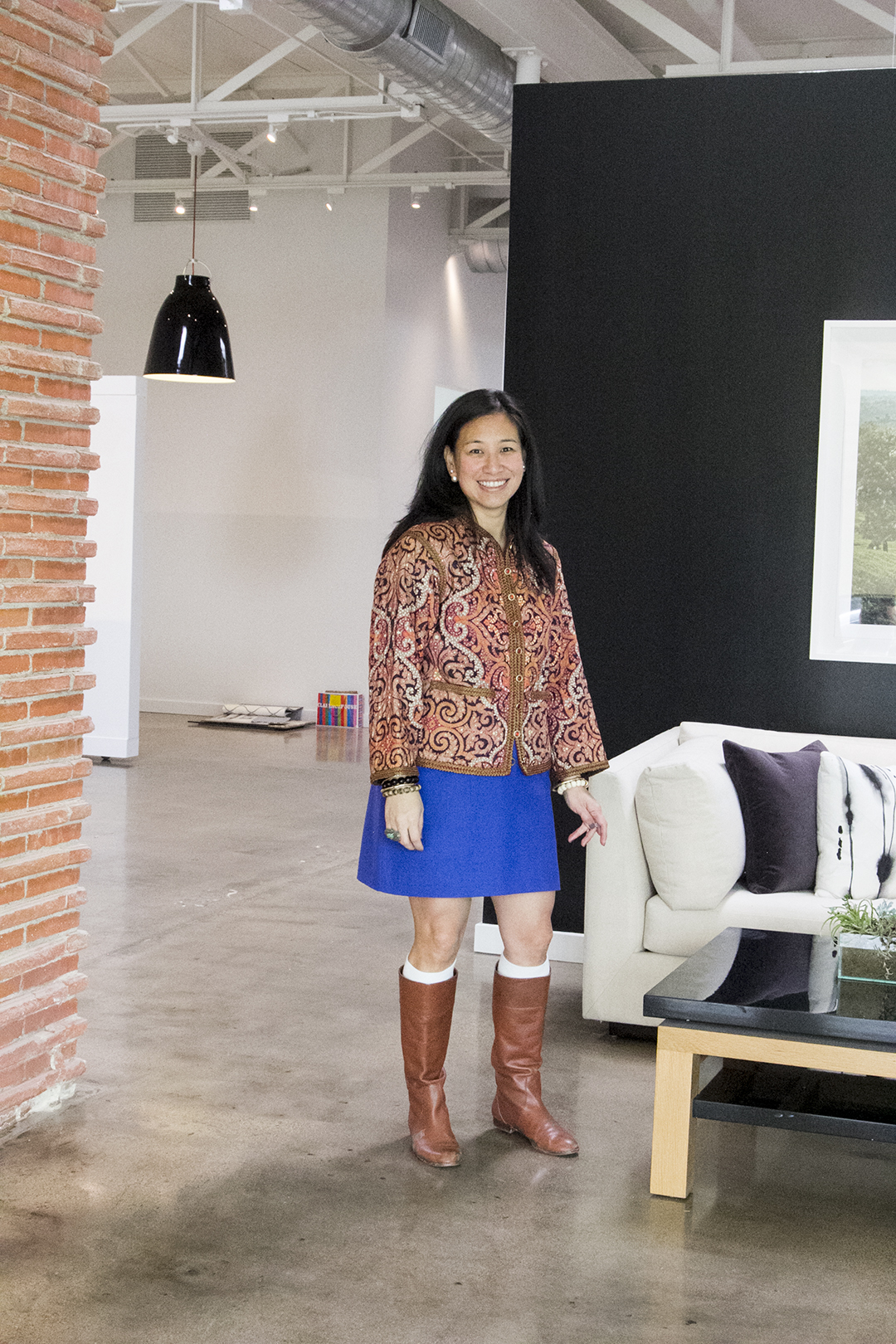 THE EARLY ENTREPRENEURIAL LESSONS SHE USED IN LAUNCHING STORI MODERN
THE EARLY ENTREPRENEURIAL LESSONS SHE USED IN LAUNCHING STORI MODERN
The biggest lesson or observation, rather, is the rise of the internet. We have become a society of consumers who want to buy most, if not everything, from the comfort of our computers and expect it to arrive the next day. Some of our customers were making early adjustments in their business model to accommodate this change in buying pattern, but for the most part, the retailers have been slow to recognize the web’s prowess and to figure out how to make the internet work for them instead of against them.
So when it came time to launch Stori Modern, we set out to be an Internet-based company only, selling direct-to-consumer, as our way to address this change in consumer behaviour. Second, we decided to stock all our furniture in every cushion and frame finish locally and have been able to commit to shipping an order either the same day or next day. If you’re a procrastinator like me, we’re the outdoor furniture line for you!
Stori Modern is a direct to consumer line of outdoor furniture. It’s a colourful line of product priced to compete with all other outdoor lines of similar quality. By going direct from the factory to the customer, we are able to deliver a sharper price for the same quality because the retailer is not involved or taking a cut of the profit.
In terms of design, Stori Modern is a decidedly fun and cheeky collection. The pieces are designed with furniture lovers and outdoor enthusiasts in mind. We are designing specifically for people who are tired of seeing the same brown, tan and drab furniture being sold throughout the marketplace. As our tagline states, it’s “Furniture Made for Conversation.”
PRICING STRATEGY
I think the biggest strategy we’ve employed to keep prices down is to go directly to the end consumer and by passing the retailer, showroom, or middleman. There are certainly challenges to taking this route as well, but it’s enabled us to set a competitive price and manage any fluctuations in material or labour costs we may or will face. Other than our business model, we’ve also tried to design certain collections to be made entirely on a CNC machine. This enables us to minimize our direct labour costs, all the while producing consistent quality piece to piece, collection to collection.
So far, our business model and design methods have allowed to scale up and down rather easily. However, I don’t want to speak too quickly, since we have just revamped our website and focus to include the hospitality industry as well, so that could change… but, I would welcome that change!
WHY SHE LAUNCHED THE BRAND UNDER THE UMBRELLA OF THE FAMILY BUSINESS
The best factories I knew to make Stori Modern’s product were already producing for the other lines under the family umbrella, so it only made sense to continue working with them, albeit under a new brand. I also rely on some key players in the family’s current business to get the job done. Leveraging their skill set and experience is how I can have a design career and work on Stori Modern simultaneously.
Keeping Stori Modern under the same family umbrella has definitely presented its own set of opportunities and challenges. In the way of opportunities, I get to work with some of the best people in the industry…I am extremely proud and fortunate they are on my team. We use each other as a sounding board to figure out what’s working or not for our respective audience.
In the way of challenges, there is a concern one line might cannibalize another. However, I would say that worry was more pronounced in the beginning than it is today. Now that Stori Modern has been around for a few years, and we’ve all had some time to adjust to its niche or role in the industry, those concerns have diminished.
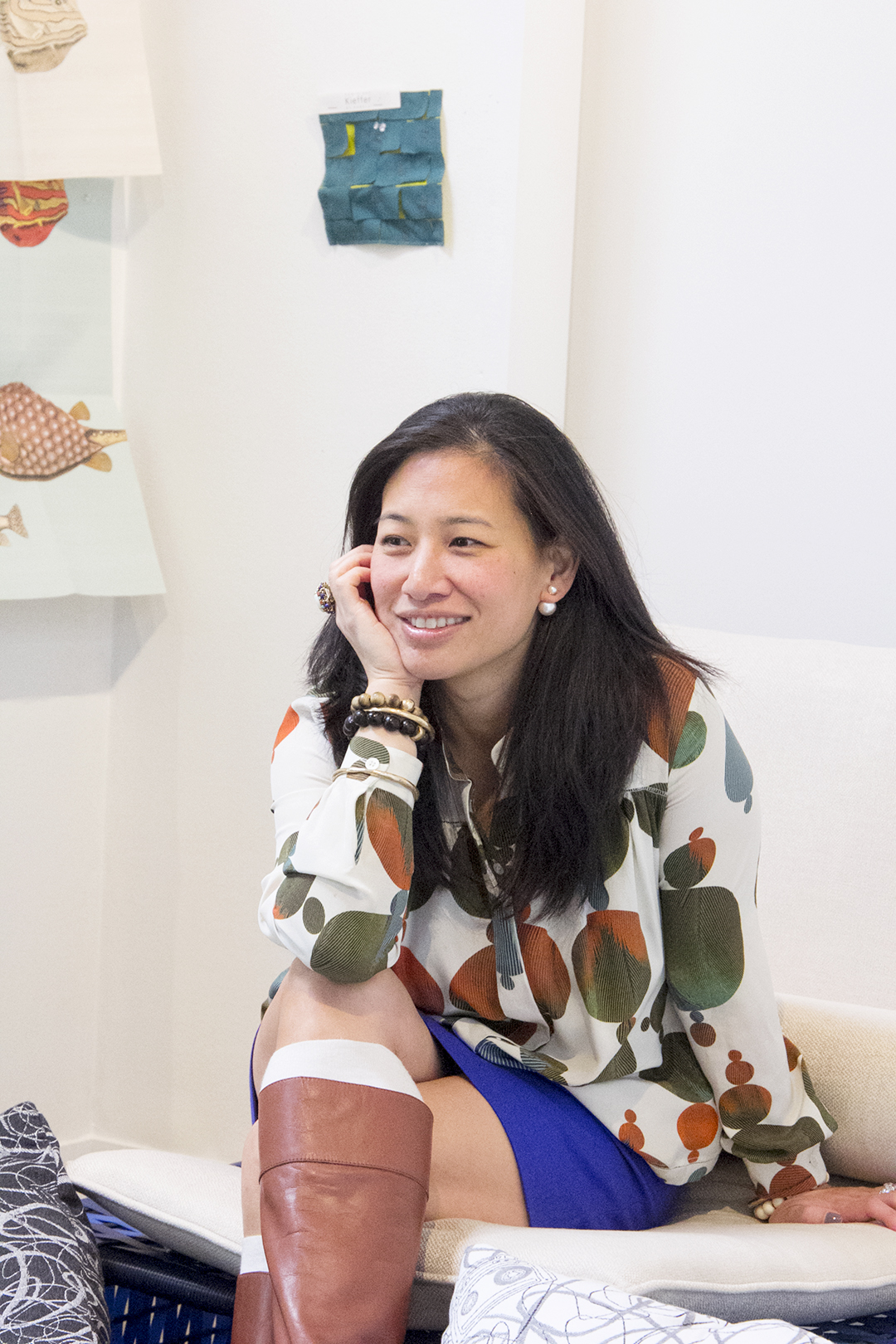 THE UPSIDES OF STARTING A BUSINESS OUTSIDE OF NEW YORK OR LA
THE UPSIDES OF STARTING A BUSINESS OUTSIDE OF NEW YORK OR LA
I like to think I get the best of both cities—I live in Dallas but am in New York frequently (once a month these days). Living in Dallas has been instrumental in boosting my confidence to start Stori Modern. The business community here is filled with a “can do” attitude I have never experienced anywhere else in the country, or the world, for that matter. It’s refreshing, encouraging, and gutsy. Succeed or not, we make the attempt. The cost of land in Dallas also allows us to have a warehouse large enough to hold inventory levels that might not be possible in or around New York.
My trips to New York are how I keep a pulse on the art and design world. I try to hit a new art gallery, see a new show, or visit the Cooper Hewitt each time I’m there. I always come back with an iPhone full of photos to share. Going to New York is also a good reminder that Stori Modern needs to include pieces of furniture scaled for dense, urban living. For apartments with patios or balconies, albeit smaller by Dallas standards, they represent luxuries of space for these urbanites, and they’re making the most of it.
HER RELATIONSHIP WITH FEAR
I’ve learned fear can be an excellent motivating factor. I feared I would jeopardize my reputation; I feared I would lose a ton of money; I feared I would be straining the relationships I had built in the other parts of the family business. All these factors made me get up each day and work that much harder to keep those fears from becoming a reality. I think a healthy dose of fear is good for any entrepreneur because it forces one to be hyper sensitive about troubleshooting or getting ahead of a potential problem. For me, fear is like risk. No risk, no reward. No fear, no freedom.
ON REMAINING STRATEGIC
I honestly think my passions are borderline compulsions. I work on them because I can’t stop thinking about them. And I often find myself happily choosing to work instead of going out because I enjoy the challenge. I joke I suffer from ASD (Attention Surplus Disorder). Unfortunately, it also means I can get so immersed what I’m doing, I may not notice the office is burning to the ground.
As for working in the Hamptons, it’s been a great escape. I use the house as a getaway (generally in the summers and into the early fall) and do my best thinking there. It’s quiet, the weather is generally beautiful, and something about the change of scenery enables me to look at a similar business issue through a different lens. I think it also helps that I get very little cell service out there, and this technological glitch actually allows me the freedom to think for longer periods of time, completely undisturbed.

